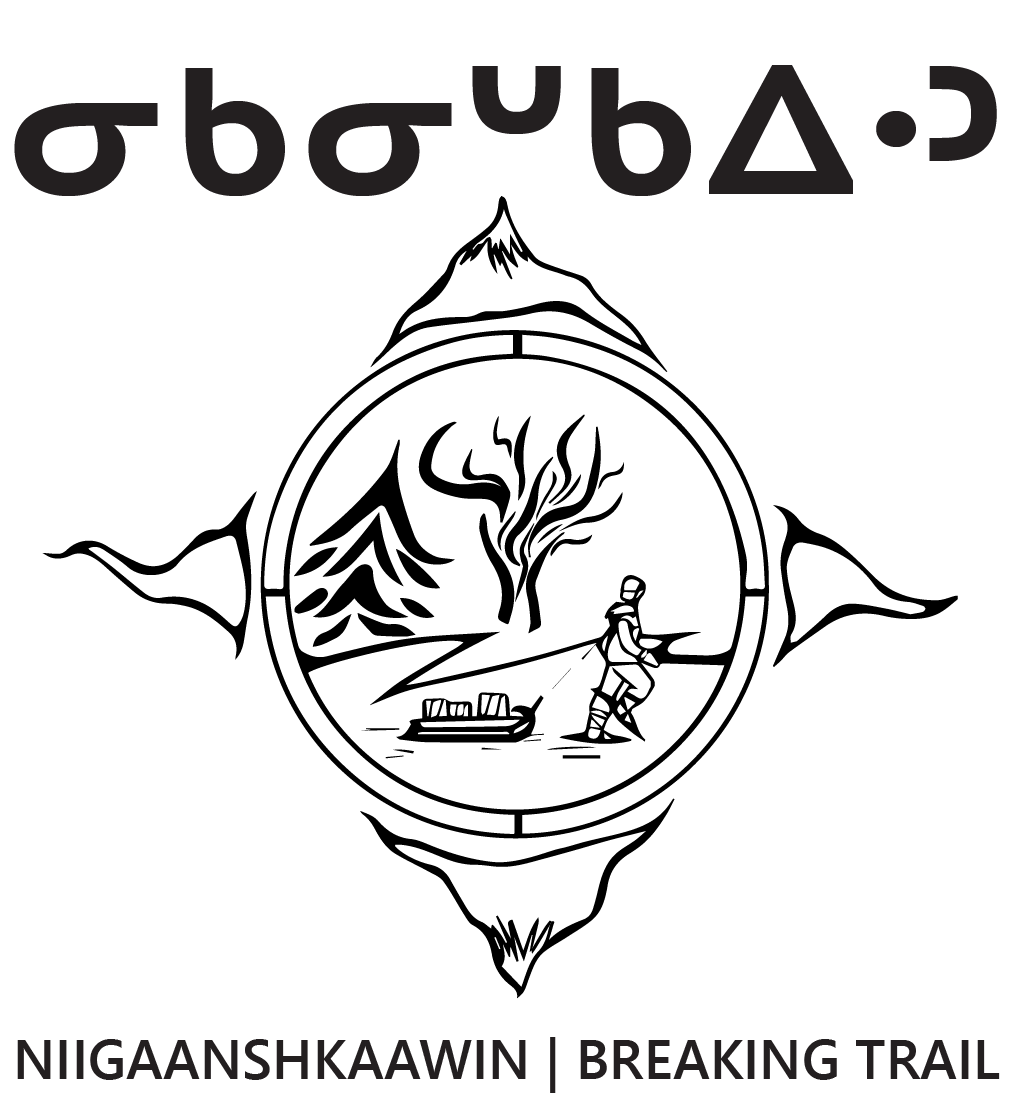Tikinagan trail-blazes again, begins work on Niigaanshkaawin
We are excited to announce the launch of the Niigaanshkaawin project and its website Niigaanshkaawin.org.
Mamow Obiki-ahwahsoowin, Tikinagan’s service model which means “everyone working together to raise our children,” has always been seen as a trailblazer in allowing First Nations to exercise their rights around how they want their children and families supported. Now, the agency is taking another step as a leader in child welfare approaches.
At the Tikinagan Child and Family Services Annual Chiefs Assembly held virtually October 2021, Tikinagan Executive Director, Thelma Morris presented on a proposal called Niigaanshkaawin. The name, which means “walking ahead or first to walk ahead” aptly describes the goal to have Tikinagan break trail on a new, proactive path to support and integrate Band Representative programs and First Nation law making. At the Assembly a resolution was passed to form a new Chiefs Committee to oversee a process to determine the role of the agency in the future with wide-ranging changes in the child welfare landscape.
“We chose the name Niigaanshkaawin because Tikinagan has always led the way,” explained Morris. “I have always said we are two-steps ahead of everyone in Ontario. This can be the base for child welfare laws in Ontario. My dream is for each First Nation to have their own child welfare laws.”
Morris said the field of child and family services is changing dramatically. On June 21, 2019, the federal government passed Bill C-92, An Act Respecting First Nations, Inuit and Métis Children, Youth and Families. This legislation has the goal of keeping Indigenous children and youth connected to their families, communities and culture. This bill will transition Tikinagan’s role in some communities from a position of child welfare leadership to a more supportive role in developing and enacting their own child welfare laws that align with their community’s culture and history. The new Tikinagan Chiefs Committee will consult with community members and leaders to determine the specific role communities want the agency to fill. These consultations will allow Tikinagan to prepare to support in whatever way each community sees fit.
“Over 30 years prior to this legislation and the Truth and Reconciliation Calls to Action, Chiefs in our communities dreamt of having a child and family services agency that would deliver services respectful of the culture and customs of the Indigenous people. With the development of Mamow service model in the last 20 years or so, we at Tikinagan have been able to work alongside First Nations to practice their inherent rights in making key decisions around care and provision of services to families in child welfare service.”
Nishnawbe-Aski Nation (NAN) Deputy Grand Chief Bobby Narcisse echoed these ideals in his address, encouraging the Chiefs and Delegates that everyone needs to work together when it comes to raising our children.
“We are here to support our families in regards to child welfare,” he said. “We encourage our First Nation communities to work with Tikinagan to ensure we maximize the resources at our community level.”
After more than 15 years working in child welfare, NAN Deputy Grand Chief Victor Linklater said one of his biggest passions has always been putting children at the centre of the work being done by agencies like Tikinagan.
“I encourage leadership in our communities: let’s work together, let’s protect children, rebuild our families and have strong communities,” said Linklater.

